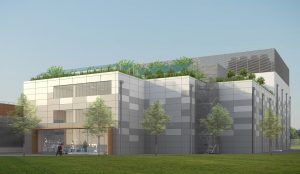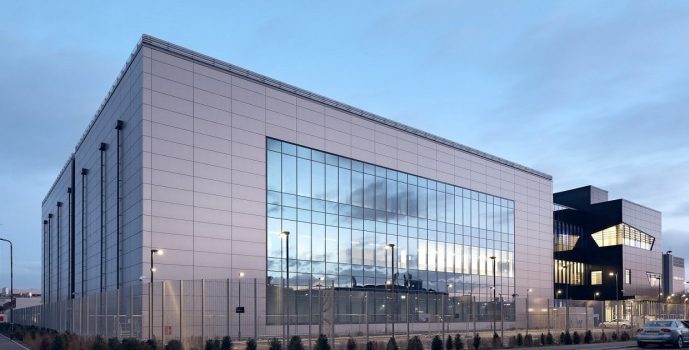The most obvious way to make any building more sustainable is by striving to achieve a design which reduces overall energy consumption – but that’s far easier said than done when it comes to data centers.
RBA co-founder, Adrian Brewin, discussed this very topic with Data Centre Magazine last month, but in case you missed the article, you can catch up below.
Dragging much of the power on any such site are the gigantic servers – and their required cooling systems. Of course, as technology develops, these high-tech systems will become more efficient and capable of operating at higher temperatures – but the ambition should always be to try and offset as much of the ‘damage’ as possible.
The cooling systems (PUE – Power Usage Effectiveness of a data center) is where the real benefits have been found in recent years, particularly using ‘free cooling’. Another idea – albeit one which hasn’t gathered much momentum in France because there are so many nuclear plants – is power generation on site.
Otherwise, a good compromise can be found by embracing more sustainable sources of power – such as wind, hydro, and solar – and the large roof space associated with the construction of data centers generally lends itself to the installation of photovoltaic panels.
Sustainable ambitions need not be an afterthought though. At design stage, seek ways to ensure the office areas are self-sufficient in terms of energy for hot water and lighting – with plenty of windows to allow natural illumination of the workspace.

During procurement, developers should actively involve the circular economy in the choice of equipment and materials. Check their origins and aim to procure reused and recycled resources at every possible opportunity. In the same vein, seeking out local suppliers can also help to reduce grey energy.
And finally, think about the project not only for itself and its immediate interest, but explore the potential impact on the scale of the region. Data sites are generally found in peri-urban areas, so make biodiversity a unifying element in the design – introduce and preserve nature, not only through fauna and flora, but terrestrial and aquatic too.
What challenges are there in making existing data centres more sustainable?
In short, these buildings consume a lot of power, are online 24/7, need to be incredibly secure, and cannot have any windows on the rooms containing the servers.
Although the IT equipment itself gets smaller and more powerful each year, the technology of cooling, UPS, and backup generators are still not reducing in size. In fact, some of the newest data centers have a colossal physical footprint.
Sadly, the reuse of equipment at the end of its life is still pretty rare. The typical lifecycle of IT equipment is three years, with cooling and electrical infrastructure lasting around 10-12 years, and the buildings themselves between 20-30 years.
It’s not just the physical units themselves either. We know all-too-well just how much packaging there is for every new TV screen or telephone or USB speaker – and every data center server rack is full of units that are each delivered with lots of packaging.
Find out more about our data centre projects, here.
Copyright © Photograph Jérôme Epaillard








